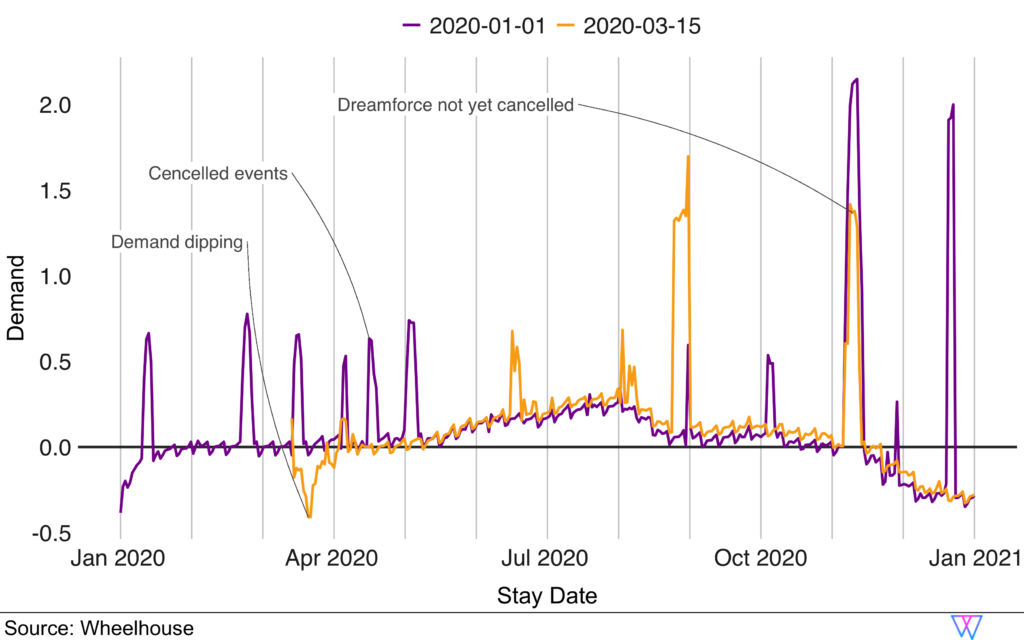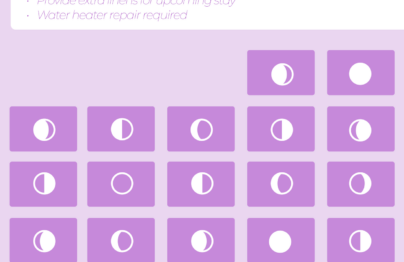As we all know, market conditions change daily, and sometimes dramatically.
In the accommodations space, as a stay date approaches, we are able to observe more bookings, and gain a more concrete understanding of the scale of demand, for any given day.
Similar to our Predictive Demand Model, our Reactive Demand Model attempts to determine both how much and why demand is shifting. On a daily basis, our model re-analyzes your market, leveraging our prior referenced Booking Curves and Gamma Warping to re-forecast these three main demand drivers — seasonality, day of the week, and local events.
For a very visual example of this, let us look at our reactive demand model for downtown San Francisco, as calculated on January 1, 2020 (purple line) and March 15th, 2020 (yellow line).
As you can see, as of January 1st (purple line), our reactive demand model was projecting large demand spikes for many events in San Francisco, including Dreamforce, a huge annual event in October, in San Francisco.
However, by March 15th, you can see that event demand for Q2 (April — June) has essentially completely evaporated. Therefore the prior forecast price increases have either completely disappeared or become much more muted.













